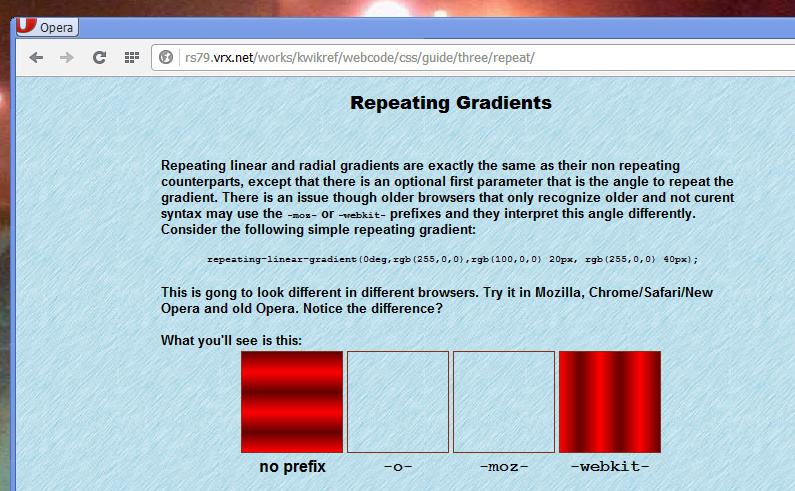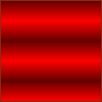
GIF of the CSS repeating gradient used here.
If this is the only red square you see on this page then your browser doen't support CSS3 gradients.
-moz- or -webkit- prefixes and they interpret this angle differently. Consider the following simple repeating gradient:
repeating-linear-gradient(0deg,rgb(255,0,0),rgb(100,0,0) 20px, rgb(255,0,0) 40px); |
This is going to look different in different browsers. Try it in Mozilla, Webkit (Chrome/Safari/Opera current) and Opera (presto).




